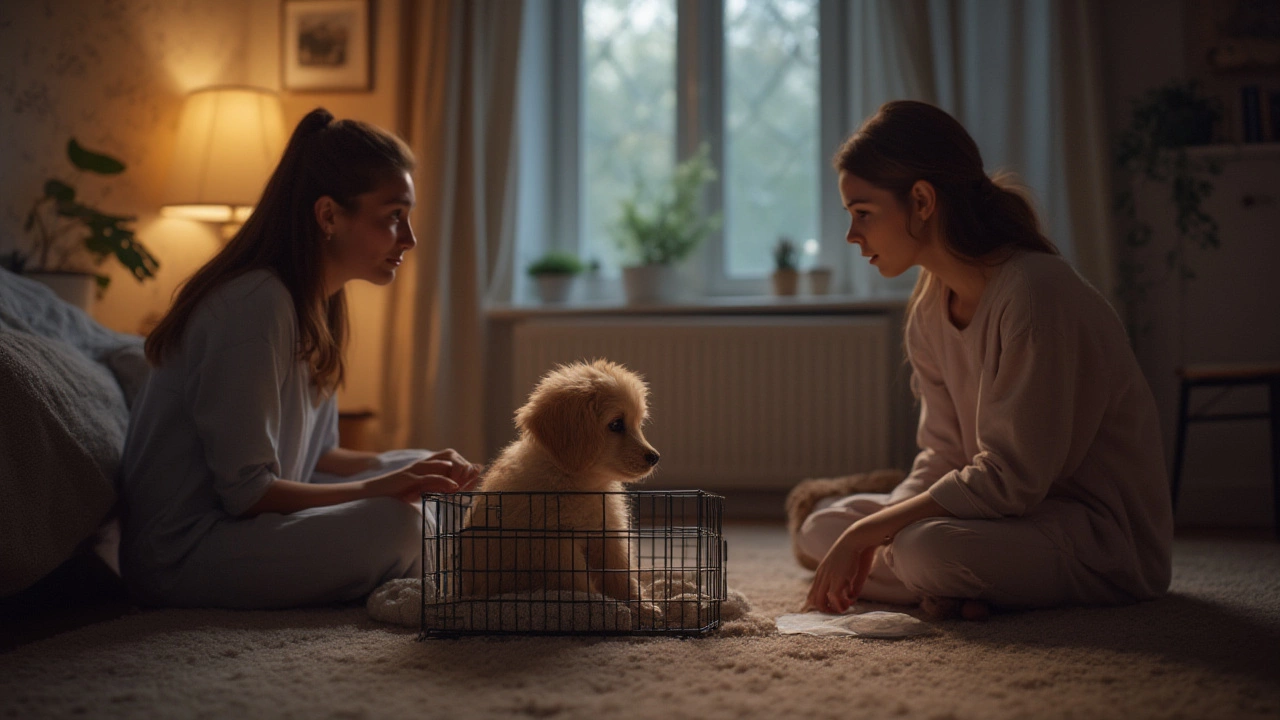Puppy Crate Training: Easy Steps to a Calm, Happy Pup
If you’ve just brought home a new puppy, you’ve probably wondered how to keep them safe, calm, and out of trouble. A crate can be the missing piece. It’s not a punishment – it’s a den where your pup can relax, nap, and feel secure. Below are the basics you need to start right away.
Setting Up the Perfect Crate
First, pick the right size. Your puppy should be able to stand, turn around, and lie down without feeling cramped. A crate that’s a few inches too big can turn into a playpen, while one that’s too small will make your pup anxious.
Place the crate in a quiet corner of a busy room. You want background noise but not a draft. Add a soft blanket or a dog bed – something that smells like you or the litter box helps them settle faster.
Introduce the crate gradually. Put treats, a favorite chew toy, or a bit of kibble inside and let your puppy explore on their own. Keep the door open at first; you’re showing that the crate is a normal part of the house, not a trap.
Feed the first few meals in the crate. This builds a positive association quickly. When your pup eats calmly, close the door for a minute, then open it as soon as they finish. Extend the time slowly over a week.
Don’t use the crate for punishment. If your puppy makes a mess or chews a shoe, send them to the crate as a timeout only after they’ve calmed down. The goal is for the crate to stay a happy spot.
Nighttime Tips: To Cover or Not to Cover
Many owners ask, “Should I cover my puppy’s crate at night?” The answer isn’t one‑size‑fits‑all. A cover can create a den‑like darkness that soothes some pups, especially if they’re nervous about the house noises.
If you decide to cover, use a lightweight, breathable fabric that won’t trap heat. A simple sheet or a commercial crate cover works. Make sure you can still see inside; you don’t want to miss signs of distress.
Watch your puppy’s reaction. If they calm down, keep the cover on. If they whine more, remove it and try a white‑noise machine or a ticking clock instead. Some pups feel safe with the cover off but need a cozy blanket inside – experiment and note what works.
Keep a consistent bedtime routine. A short potty break, a calm cuddle, and a cue word like “night” signal that it’s sleep time. When you put them in the crate, say the cue, close the door gently, and walk away. Avoid the temptation to open the door at the first whine – that teaches them they can get out by crying.
If your puppy whines, wait a minute before checking. They might be settling. If the whine continues for 5‑10 minutes, a quick check (no treat, no play) can reassure them. Over time, the whine fades as they learn the crate is safe.
Finally, remember that crate training is a marathon, not a sprint. Some puppies adapt in a day, others need a week or more. Stay patient, keep the tone upbeat, and reward calm behavior. Before long, the crate will be the spot your puppy runs to when it’s time to rest, and you’ll have a quieter home and a happier dog.
Puppy Crate Training: Should You Use a Pee Pad at Night?
Worried if you should put a pee pad in your puppy’s crate at night? Learn practical tips, risks, and real solutions for stress-free, dry puppy sleep.
